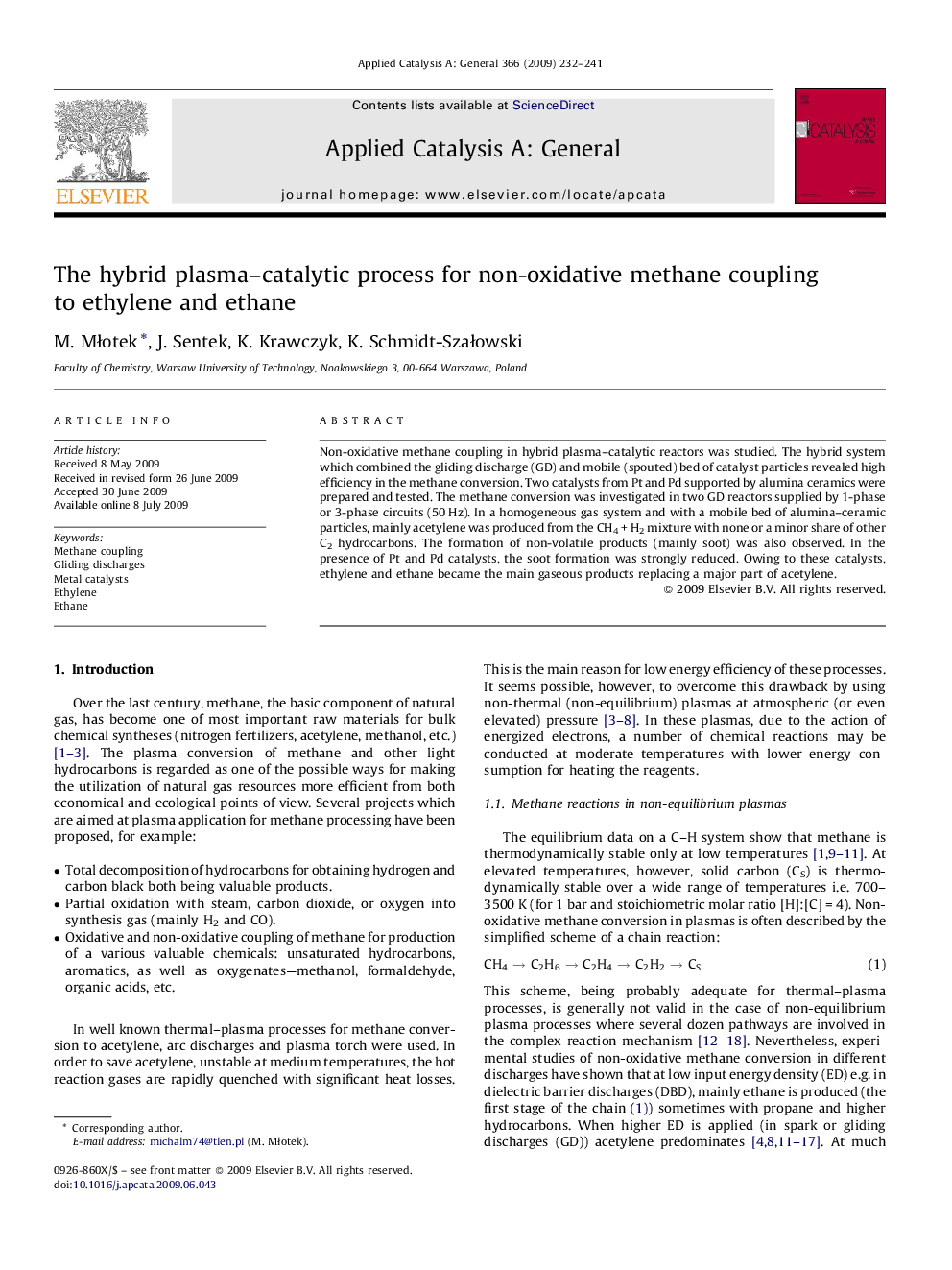| Article ID | Journal | Published Year | Pages | File Type |
|---|---|---|---|---|
| 42659 | Applied Catalysis A: General | 2009 | 10 Pages |
Non-oxidative methane coupling in hybrid plasma–catalytic reactors was studied. The hybrid system which combined the gliding discharge (GD) and mobile (spouted) bed of catalyst particles revealed high efficiency in the methane conversion. Two catalysts from Pt and Pd supported by alumina ceramics were prepared and tested. The methane conversion was investigated in two GD reactors supplied by 1-phase or 3-phase circuits (50 Hz). In a homogeneous gas system and with a mobile bed of alumina–ceramic particles, mainly acetylene was produced from the CH4 + H2 mixture with none or a minor share of other C2 hydrocarbons. The formation of non-volatile products (mainly soot) was also observed. In the presence of Pt and Pd catalysts, the soot formation was strongly reduced. Owing to these catalysts, ethylene and ethane became the main gaseous products replacing a major part of acetylene.
Graphical abstractNon-oxidative methane coupling in hybrid plasma–catalytic reactors was studied. The hybrid system which combined the gliding discharge (GD) and mobile (spouted) bed of catalyst particles revealed high efficiency in the methane conversion. In a homogeneous gas system and with a mobile bed of alumina–ceramic particles, mainly acetylene was produced from the CH4 + H2 mixture. The formation of non-volatile products (mainly soot) was also observed. In the presence of Pt and Pd catalysts, the soot formation was strongly reduced. With these catalysts, ethylene and ethane became the main gaseous products replacing a major part of acetylene.Figure optionsDownload full-size imageDownload as PowerPoint slide
